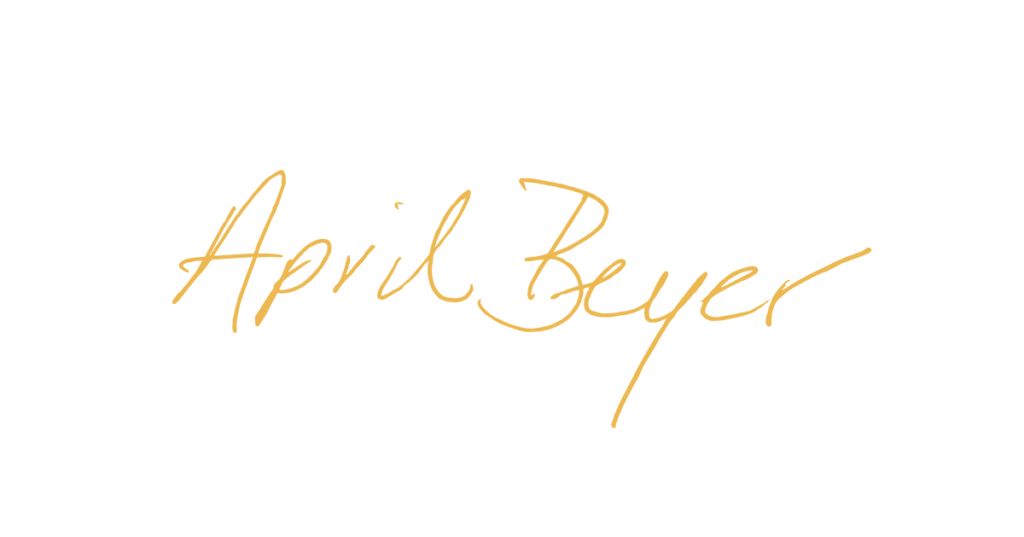I’ve always believed that meaningful questions are the gateway to deeper connections. In my experience coaching and guiding countless professional men and women, I’ve seen how simply asking the right question at the right moment can transform a stiff, transactional relationship into a genuine, collaborative partnership. And yet, so many of us have been taught that when we step into leadership roles, we need to know the answers instead of seeking them.
I’ll tell you a secret: Curiosity is your quiet superpower. It’s not about feigning ignorance or handing over your authority; it’s about showing genuine interest in the people you lead and the challenges and opportunities ahead. For female leaders, curiosity can become a remarkable asset. We often have an innate sensitivity to the emotional undercurrents in a room. Asking thoughtful questions and listening with intention adds to that natural strength, helping us deepen professional relationships and drive lasting success.
So, let’s do a quick mindset check. When was the last time you were truly curious in a meeting? Did you listen just to respond, or did you allow yourself to wonder? Today, I’d like to challenge you to flip the script. Embrace curiosity. Ask questions. Lean into that sense of discovery and see how it transforms your relationships at work and your ability to innovate and lead confidently.
The Neuroscience of Curiosity
We often think of curiosity as a personality trait something you either have or you don’t. But science suggests it’s a state of mind we can cultivate. Research has shown that curiosity activates the brain’s reward center, flooding us with dopamine, the same “feel-good” chemical we produce when we enjoy a hearty laugh or receive praise for a job well done. Simply put, we’re wired to enjoy learning something new. And if you appreciate the thrill of discovery, you know exactly what I’m talking about.
How Curiosity Activates the Brain’s Reward System
When you ask a question or seek new information, your brain treats it like a tiny mystery. It kicks into gear, scanning your existing knowledge, pulling up relevant details, and forming connections. This process feels energizing because uncovering answers satisfies your brain’s desire for resolution. Think of how you feel watching an excellent mystery film or reading a suspenseful novel. You’re engaged and eager for the reveal. That’s the natural high that curiosity can offer in the workplace, too.
When leaders channel this curiosity, the positive energy becomes contagious. The simple act of saying, “Help me understand this better,” signals to your team or colleagues that their perspectives are both welcome and valuable. This often leads to a more open and engaged environment where people feel safe to share their thoughts. As a result, you’re more likely to receive a wealth of information that helps you make better decisions. And guess what? That flood of knowledge and new ideas strengthens your ability to lead and your relationships with those who feel heard and respected.
The Psychological Benefits of Curiosity in Leadership
There’s another side to this coin: Curiosity has psychological benefits beyond learning new things. When we’re curious, we enter a state of active inquiry rather than guarded self-protection. In other words, we shift from “I have to prove myself here” to “I’m here to explore and understand.” This mindset lowers stress, encourages empathy, and increases our ability to connect with others. It’s essential for female leaders who sometimes feel they have to prove their credibility. By asking questions, you free yourself from that constant state of defense and open yourself to genuine engagement.
How Asking Thoughtful Questions Strengthens Relationships
Do you ever notice how your best mentors or the leaders you admire most ask the most insightful questions? It’s no coincidence. Their questions are thoughtful and relevant because they’re paying attention. When you’re curious about someone’s challenges or new perspectives, you signal respect and curiosity at the same time. This approach helps break down any preconceived rank, department, or background barriers.
Take a moment to think about a colleague you want to connect with more deeply. Maybe you sense hesitation in them or know they’re under a lot of stress. Instead of diving right into a project update, try opening with a question like, “How are you feeling about our upcoming deadline? Is there anything we can do to support you better?” This invites honest dialogue and can become the cornerstone of a more trusting professional relationship.
The Role of Curiosity in Building Trust and Understanding
Trust can’t be forced, especially in a professional environment where everyone has specific goals and busy schedules. However, curiosity is a powerful tool for building trust because it indicates a genuine desire to learn from or about someone else. When you’re curious about a person’s thought process or experiences, they feel valued as a whole individual, not just as a job function.
Curiosity also tempers the impulse to judge. Instead of making snap assumptions, you pause to ask for more details. That pause can prevent misunderstandings and show your team you value clarity over quick, potentially unfair conclusions. Over time, this fosters an atmosphere where people feel comfortable sharing successes and struggles, an essential ingredient for genuine camaraderie and collective progress.

Fostering Innovation Through Curiosity
I’m often asked, “What’s the one thing that separates a truly innovative culture from one that feels stuck?” While many factors can be involved, curiosity is a consistent driver of innovation. When your team feels safe exploring the “what ifs” and “could we,” they are far more likely to come up with big, game-changing ideas.
Creating a Culture Where Curiosity Drives Creativity and Problem-Solving
Innovation starts with letting people know that all questions are welcome, including the ones that challenge the status quo. If you’re working through a complex issue, encourage your team to brainstorm questions before proposing solutions. Let them outline what they don’t yet understand, what they want to see tested, and what assumptions might be holding everyone back. This shifts the conversation from “Here’s the fix” to “Let’s find the best route to the fix,” which often uncovers insights you might otherwise miss.
When your team sees that you, as a leader, aren’t just tolerating but actively encouraging curious exploration, you permit them to stretch themselves. They’ll start proposing ideas or angles that might have seemed too risky or left-field. That’s where true innovation is born—right at the edge of your comfort zone.
Examples of How Female Leaders Inspired Innovation by Being Inquisitive
I’ve worked with female executives who mastered curiosity so seamlessly that they transformed entire divisions. One COO I know routinely gathers her product teams and asks them to walk her through their user research, not just the polished findings. She wants to see the raw data and asks many questions about the outliers. She believes that anomalies often point to untapped opportunities. Her team knows every “odd” data point might spark a new feature or product line. This approach has led to products that captured niche markets and propelled the company’s growth.
Another CEO I’ve coached came into an organization where employees felt disconnected from leadership. Instead of rolling out new policies, she held a series of open forums, asking department heads, “What’s one hurdle you face that you wish leadership could fix?” By zeroing in on their challenges and being genuinely inquisitive, she quickly pinpointed systemic issues that had been festering unaddressed. Within months, she had a roadmap for meaningful organizational change. Her willingness to ask and listen transformed her from an “outsider” to a trusted advocate.
Practical Strategies for Leading with Curiosity
Talking about curiosity is easy, but bringing it into your leadership style can feel trickier. After all, we’re juggling countless demands, and it may not feel natural to slow down and ask more questions. Here are some practical steps to help you weave curiosity into your routine.
Active Listening Techniques to Encourage Open Communication
- Use Silent Pauses: After asking a question, resist the urge to fill the silence. Give the other person a moment to gather their thoughts.
- Reflect and Validate: Paraphrase what you heard. For example: “It sounds like you’re worried about how this timeline will affect quality. Is that right?” This shows you’re genuinely listening, which encourages them to keep sharing.
- Ask Follow-up Questions: Instead of moving on once someone answers, dig deeper. “What do you think is driving that concern?” or “Can you share an example?”
Active listening goes hand in hand with curiosity. You can’t ask great questions and then tune out the answers!
How to Ask Powerful, Open-Ended Questions to Deepen Conversations
Open-ended questions invite more than a “yes” or “no” response, pushing people to think and share more deeply. Think of questions that start with “How,” “What,” “Why,” or “Tell me about…”
- “How did you arrive at that conclusion?”
- “What are we missing from this approach?”
- “Why do you feel that solution might be best for our team?”
Such questions allow people to reveal their motivations, challenges and hopes in a way that fosters genuine understanding.
Avoiding Assumptions and Cultivating a Beginner’s Mindset
It’s too easy to rely on past experiences and assume we already know the answers. However, curiosity calls for a “beginner’s mindset,” where you approach each situation as if encountering it for the first time.
- Acknowledge That You Might Be Wrong: Before a meeting, remind yourself, “I don’t know everything. I might learn something new today.”
- Seek Clarification: If someone’s point doesn’t align with your previous experience, don’t dismiss it. Ask for details: “That’s interesting—could you walk me through your thought process?”
A beginner’s mindset isn’t about being naive; it’s about remaining open, flexible, and ready to learn from any situation.
Balancing Curiosity and Authority
A common concern I hear from many women in leadership is this: “How do I stay curious without looking indecisive or uninformed?” That’s a fair question. After all, you’re responsible for making the final call on many decisions. Here’s the good news: You can do both. You can be an inquisitive leader without forfeiting your authority.
Demonstrating Curiosity Without Compromising Leadership Presence
Curiosity and confidence aren’t mutually exclusive. One can amplify the other. When you ask questions from a place of self-assuredness, you let people know you’re confident enough to consider multiple perspectives.
For instance, you might say, “I want to make the best possible decision here, and I need your honest input. Can you help me see this from a different angle?” A statement like this showcases the leadership role you decide on and your willingness to hear others out. It’s a win-win.
Using Curiosity to Empower Teams While Maintaining Decision-Making Authority
Empowerment doesn’t mean deferring every decision to the group. It means helping your team feel that their voices and expertise matter. Here’s a simple framework:
- Set Clear Goals: “Our goal is to reduce client onboarding time by 30% this quarter.”
- Seek Input: “What obstacles do you see, and how might we overcome them?”
- Decide and Communicate: “Based on all the insights we’ve gathered, here’s what we’re going to do next, and here’s why.”
Your curiosity in Steps 2 and 3 shows that you value collaboration. Your leadership in Step 3 ensures the team knows you’re steering the ship decisively.
Curiosity as a Leadership Superpower
Curiosity is more than a trait; it’s a choice, a practice, and, for female leaders, a strategic advantage. You build deep professional relationships that drive real success by asking thoughtful questions, staying open to different perspectives, and genuinely seeking to understand the people around you. Instead of feeling pressure to have all the answers, embrace the power of wonder. Let it guide you to insights, forge stronger connections, and spark the innovative solutions your team and organization need.
The next time you step into a meeting or a one-on-one conversation, lead with a question rather than a statement. Challenge yourself to see how this simple shift in approach transforms the discussion. If you’re unsure what question to ask, try something open-ended like, “What do you think is the biggest opportunity we’re missing right now?” or “How do you see this issue differently?” Notice how the energy changes. That’s the power of curiosity at work—and it’s waiting for you to harness it.
Are you ready to transform your leadership approach? Take my Relatability Assessment and discover how to connect more meaningfully with your audience.























